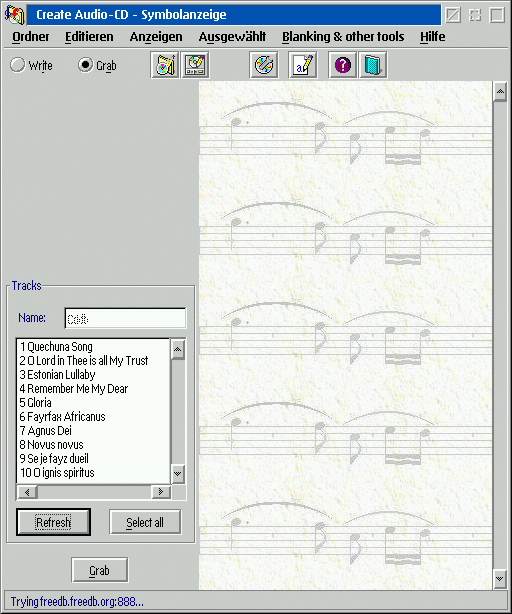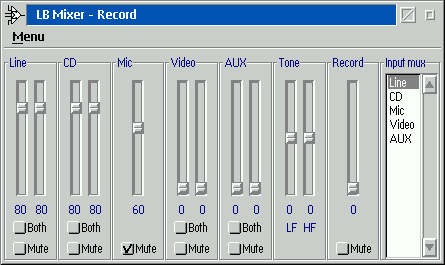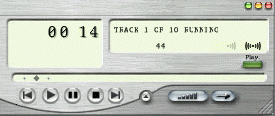
VOICE Home Page: http://www.os2voice.org
[Previous Page] [Next Page]
[Features Index]
 VOICE Home Page: http://www.os2voice.org |
[Previous Page] [Next Page] [Features Index] |
Let me therefore repeat the 'philosophy' of 'The Free Files': I am presenting
here a very personal selection of programs I am using and with which I have had
good experiences. So it is possible in some cases that I am overlooking a program.
More probable, though, that I am omitting it on purpose. There are many possible
reasons for that, and it doesn't mean necessarily that the program is bad; there
may simply be a feature I do not like, while others see it as the most interesting
one. In any case, everybody is invited to write an article about his favorite program
and publish it in the VOICE newsletter. Nothing more to say about this subject,
so let's go on to more current issues.
You may remember that at the end of last year, the end of the classical computer
was proclaimed, based on declining growth rates. (A German computer magazine promoted
this idea a lot.) I don't see that, in the same way I do not see the end of OS/2.
Now that we have a choice between MCP (Merlin Convenience Pak), ACP (Aurora Convenience
Pak) and eCS (eComStation), the future doesn't look so bad, especially when looking
at Whistler and MacOsX. But probably IBM will show us another example of their kind
of 'stealth marketing'.
At the end of the year I made a larger trip to the future as proposed by IBM,
which means: I updated my Linux, which I installed as a parallel OS in 1996, with
KDE2 and Xfree 4.01. What should I say? Well, after several downloads of the daily
refreshs of KDE2 from the SUSE server, after the installation of the latest Matrox
beta driver ... it's running now ... as tough as 'ape leather'. 'Welcome back to
the future.' My impression reminds me very much of when in 1994 I finally got OS/2
Warp3 installed on my Compaq Contura 386/25Mhz notebook with 8MB, after a couple
of tries: 'Hurrah, it's running.' At that time I was doing my daily work with Wordperfect
6.0 for DOS, using IBM-DOS 7.0.
Still I am glad that there is Linux, because it is the origin of a number of
programs that fill OS/2 with more life - and that brings us to the subject of this
installment.
Then last year I got a repair request: I had to check an allegedly defective
CD recorder which didn't work under Windows NT, but did so flawlessly, as it turned
out, with CDRECORD/2 and OS/2. This was for me an occasion to try recording music
myself.
While 'knowing better' - under OS/2 you should use SCSI - I decided for an ATAPI
CD recorder, a Sony CRX 140E. This after first having found out that it works.
This was an easy decision, now that using ATAPI CD recorders with OS/2 isn't
a problem any more, thanks to the combined efforts of DANIS506.ADD, DANISATAPI.FLT,
ASPIROUT.SYS and CDRECORD/2. Many thanks to Daniela Engert (Dani drivers),
Daniel Dorau (Aspirout 1.01), Paul Ratcliffe (Aspirout 1.1 beta4), Joerg Schilling
(Cdrecord), Chris Wohlgemuth (Cdrecord 1.9a02 OS/2 port), Nick Lepehin (Cdrecord
1.10a09 OS/2 port) and Eberhard Matthes for EMX, which only makes all these x ports
possible.
In order to run an ATAPI CD recorder with OS/2 you need the following CONFIG.SYS
entries:
BASEDEV=OS2ASPI.DMD /ALLThe following entries should be deleted (or deactivated with the prefix REM at the beginning of each line):
DEVICE=x:\os2\boot\ASPIROUT.SYS
BASEDEV=DANIS506.ADD
BASEDEV=DANIATAPI.FLT
BASEDEV=IBM1S506.ADDIf somebody finds that complicated, I can assure you that using Linux requires at least as much effort (not taking into account the research for the necessary information). And, irony of fate: the most recent versions of CDRecord cannot be compiled with (at least) SUSE and Redhat Linux. So with OS/2 we are even at a more current level (even with eventual bugs).
BASEDEV=IBMATAPI.FLT
BASEDEV=IBMIDECD.FLT
If you want to copy audio CDs, I recommend also that you get CDRDAO by Andreas
Mueller, also with ports by Chris Wohlgemuth (1.1.3) and Nick Lepehin (1.1.4). Unlike
CDRecord, where the later port doesn't have any advantages for OS/2, I would recommend
version 1.1.4 of CDRDAO by Nick Lepehin in this case.
'Command line afficionados' who want to impress Windows only users will be happy
with this solution, but I would prefer a GUI. Also here the solution of Christopher
Wohlgemuth, the Audio-Data-CDCreator, impressed me the most. I am using the abbreviation
ADC from now on, not without ulterior motives, because ADC was once the importer
of BRAUN audio equipment to the USA and for a short time even the owner of this
company. Or in other words: ADC 'sounds good' for me and also stands for
'good design' - I wonder if Chris Wohlgemuth has realized that as well? This
brings me to the question: Why do computers have to be so ugly, except for a few
Macs?

But before I get lost in more taxonomies (see also Huizinga: Autumn of the Middle
Ages): ADC is for me one of the programs that lets me stay with OS/2. ADC is completely
integrated into the WPS and allows an almost 'intuitive' handling. I don't know
any comparable CD recording frontend for either OS/2 or Linux. Future versions will
also support two CD recorders. I am leaving out a complete listing of features,
because everybody can read the Tutorial.inf of ADC in order to become familiar with
its operation. There's only one thing actually I do not like with ADC: Once you
have grabbed your files from a CD, you have them in reverse order in the directory,
and if you do not take care and reorder them, the newly copied CD starts with the
last track instead of the first. But considering the fact that ADC is only at version
0.45 currently, I do not dare think about what it will be like once it is at 1.0.
ADC is such an exceptional program that I was motivated to support Chris Wohlgemuth
with my limited means in its further development. I don't want to make false claims.
Further development has been exclusively done by Chris Wohlgemuth. I am only painting
a little picture here and adding a few lines there to the help and inf files, hoping
to be helpful to the work of Chris Wohlgemuth. Maybe there are others who want to
think about how they could help support the development of other programs.
With my current hard- and software I was/am already able to copy audio CDs or
selected titles from CDs - and of course data as well. But my original idea was
something else: I wanted to save on CDs the huge number of audio cassettes my wife
has brought into our marriage, because audio recorders are dying out and because
some of the cassettes contain titles that are not available on CD or LP.
So my next step was buying a 'decent' sound card. Since my current motherboard
has 6 PCI slots, but only one ISA slot, it had to be a PCI card of course. Sorry
to say, but it's not looking bright in that area at the moment. Sure, there are
a few cards, but they don't have any real advantages over a Soundblaster 16. Moreover,
the high end cards from, e.g., Terratec - once promising to replace Creative completely
under OS/2 - do not run at all. Since at that time the Soundblaster Live, along
with the drivers by Sander van Leeuwen, got much praise, I decided to get that one.
I was also convinced because even the Value Version promised to provide full digital
in- and output, together with additional adapters. I can live with the limitations
of the driver - MIDI only through TIMIDITY or RTMIDI, WINOS/2 support only with
the generic WINOS/2 audio driver -, because I am neither interested in MIDI nor
WINOS/2. With the LBMMIX of Lesha Bogdanow there's also a decent mixer available.

In the meantime I am wiser, or a bit more down to earth. Following a number of
reports, digital editing seems to be more a move of the marketing department of
Creative than anything else. Analog artifacts are showing in the signal, and the
like. Sander von Leeuwen has postponed the further development and fix of a couple
of known bugs to an undetermined future...
But worst of all: There is no decent recorder under OS/2, neither freeware, shareware
nor commercial. Sure, you can use the one that comes with MMOS/2, but is there anyone
who has ever successfully used it to master a LP or MC on a CD with single tracks?
There is a number of tools like the command line based PLAYREC by Carsten Arnold,
and the announcement of Sunedit has been floating arround for a while. But they
all cannot stand a compare with what is available for Windows, for even 5 seconds.
You could of course read in a complete LP or MC and cut it into single pieces,
or sit next to the computer and read every single song, but this reminds me of my
childhood when I was sitting with a microphone in front of one of these music boxes
in the style of Gelsenkirchen barock and banned songs from the radio on my Grundig
audio band recorder. From time to time my mother came in and said: 'Oh, you are
recording' for which another song was ruined.
So for the time being I have put aside my MC on CD project. But who knows, maybe
there will come a day when somebody ports GRAMOFILE to OS/2 - there's even a DOS
port finally - and somebody else even wrote a suitable frontend.
In the meantime I enjoy my CDs also at the PC, using WARPCD by Chris Wohlgemuth
and a set of AKG headphones. It sounds surprisingly acceptable. WARPCD has an advantage
over the MMOS player because it even works if a fixpak has brought some disorder
into the system and that I can adapt its look to what I prefer, like the illustration
below.

P.S. I still prefer listening to music with the stereo equipment described in
the beginning. I have even constructed and built by myself an external power supply
for my NAIM pre-amplifier (of course in a NAIM aluminum continuous casting case
to maintain the look) and also laboriously tinkered with silver brazing a cinch
(Neutric connector) to the BNC cable for connecting the CD player. But for the rest
I am going with the usage instructions, no daily enhancements of the cables, no
de-magnetizing of the CDs and the like. Just music.